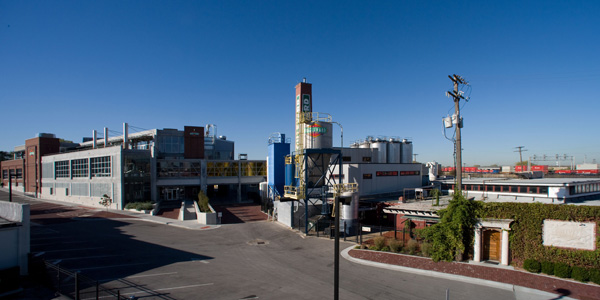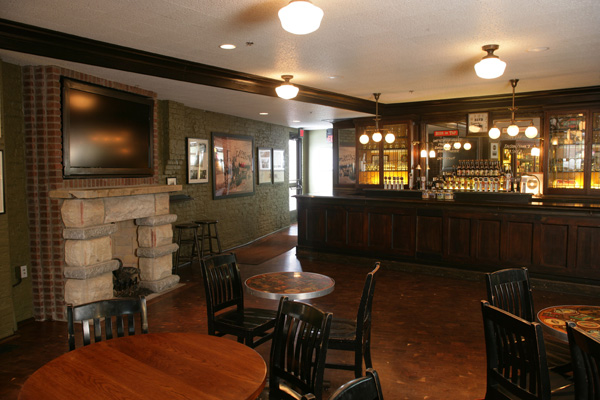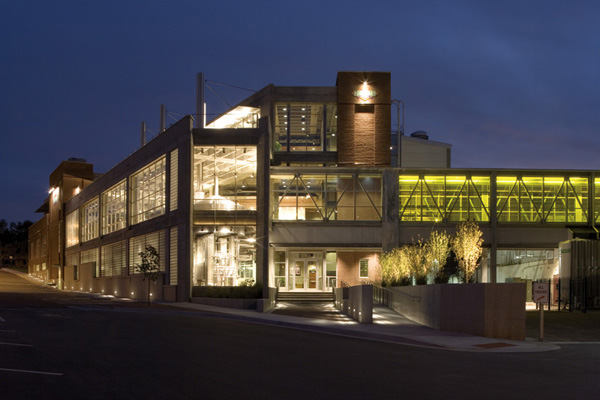
On Nov. 17, Boulevard Brewing Company in Kansas City, MO, turned 21; the brewery celebrated by releasing 21st Anniversary Fresh Hop Pale Ale as the newest beer in its Smokestack Series.
When founder John McDonald (above) delivered the first keg of Pale Ale on that day in 1989, the beer scene in the US was vastly different than it is today. There were only about 100 breweries in the whole country. The typical Midwestern bar had two or three taps, each of them pouring nearly identical yellow lagers. While there was a cadre of intrepid brewers on the coasts who were crafting full-flavored beers, the Midwest lagged behind. Save for Summit, Goose Island, Capital, and a small handful of others, the region remained dominated by Anheuser-Busch, Miller, and Coors.
Since 1989, Boulevard has grown to become the largest craft brewer in the Midwest. Boulevard beers can be found in 19 states. They have won numerous awards for their portfolio of year-round, seasonal, and specialty beers. Their Unfiltered Wheat beer is one of the best selling beers in the Midwest. They continue to stretch their brewing muscles with the Smokestack Series of limited-run and experimental big-bottle beers.
I sat down to lunch with McDonald a while back and asked him what the anniversary meant for the brewery.
A 21st anniversary is an odd one to celebrate. Why not the 20th or the 25th?
We thought about that. The way that came about was we’d been doing so much expansion and new projects at the brewery that when it was our 20th anniversary we were too tired to do anything. So we thought let’s just put it off until our 21st anniversary. It’s kind of like a coming of age, the drinking age. So that’s kind of how that came about really. We actually have a billboard in Kansas City that says, “We’re finally old enough to order it ourselves.”
As one of the craft beer pioneers, how does it feel to turn 21?
You know, I’m a hands-on guy. I’m more interested in being in the brewery than being out in the market. So for me, the brewery has grown to a point where we’ve been pretty successful and we’ve been able to hire a lot of people to do the marketing for us and a head brewer so I don’t have that responsibility so much anymore. So some days, unfortunately, I feel more like a businessman than a brewer. But I do still feel like a brewer. It always feels good when I’m filling out something that asks about my occupation. I can write, “I’m a brewer.” That’s a cool thing. I think it’s a really honorable profession. It’s something that has been around for so long. It’s a good business to be in. And at a time in America where there is so little production of things, people look at breweries and think, “Wow, you’re making something.” We make a product. We make something that is real.

When you opened Boulevard back in 1989 there weren’t yet many small breweries. What made you think opening a brewery was a good idea?
Well, I have to tell you my background a little bit. I grew up in a small rural town in Kansas. Growing up in that small town, we drank beer. We drank beer when we were 12. The whole age thing wasn’t a big deal. So by the time I went off to college in the ’70s, drinking beer wasn’t really a big deal. It was just part of life. There was this guy that I was in art school with at college who ended up in the wine business. I was always enamored of the wine business, but he kept telling me that I ought to open a brewery. You couldn’t start a winery in Kansas City, but you could open a brewery. That idea kind of led me to homebrewing. I grew up drinking Coors, but through experimenting with beer my personal tastes changed.

I’ll tell you one thing that really caused a change for me: After college I moved to Kansas City and bought this house that I was fixing up. I would buy a case of cheap beer and drink it as I was doing all this work around my house. But I realized that at the end of the week I would have all these half-drunk cans of beer sitting all over everywhere. It was pretty stupid. I was buying a case of cheap beer and only drinking half of it. That’s makes it pretty expensive beer. But then some guy told me, “What I do is buy a case of the cheapest beer I can find and a six-pack of Guinness. Then I get a glass and pour a quarter of a bottle of Guinness into the cheap beer.” It’s actually pretty good. It makes the beer taste like beer. I did that for a long time. And when I first started going out with my wife, I’d go to the liquor store and buy different six-packs of imported beer. My favorite was Belhaven. That kind of got me into good beer.
In the mid-eighties I started looking into starting a brewery. I started visiting a lot of breweries in the central Midwest. Summit was already going. I came up and visited Summit. I had a friend who was a writer and he helped me write the business plan. I started the brewery with about $850,000 in capitalization, which, when I think about it now, is almost nothing to start a brewery. But it allowed us to get through those first few months and survive. We used all old equipment. We had old racking arms from 1934. Our original brewhouse was from 1935. We still have it in the brewery. Now we use it for all the Smokestack Series beers, but until not too long ago we were producing over 100,000 barrels of beer on that tiny 35-barrel brewhouse. Eleven brews a day, 24-7.
What was the market like back then?
It was grim in the early days in the Midwest trying to sell a better beer. I remember once I went into this bar called the Twin City Tavern. It was a real classic tavern. I went in at like 11 in the morning and there were three guys in there all drinking their 12-oz pilsner, probably Busch. No head on the beer because that would be cheating them out of some of the beer. So our sales guy said, “You know what, guys, I’m gonna buy you a beer. This guy makes this beer just five or six blocks from here. He’s working his ass off. He’s out here delivering beer at 11 in the morning. You should try one of his beers.”
So the bartender poured them all a Pale Ale. It looked great. Had a nice head on it. One of the guys wouldn’t even try it. The other two guys took a little sip and then pushed the beer back across the bar to the owner. And then they didn’t say anything. So I went and picked up my little half-barrel keg. There were probably 20 full Busch kegs there. And as I was walking out the door one of the guys looked at me and said, “Young man, that is absolutely the worst beer I have ever had in my life.” I ran out of there thinking, “What have I done? I’m gonna go broke.”
How long did it take to start seeing a shift in consumer response?
It started happening even then. In those first early years we started out with 15 or 20 draft handles. Then we’d get 40. Then 60. Then 100. Even in a place like Omaha, Nebraska, which is a huge market for Boulevard now. Our wholesaler there said, “You know, John, someday we’ll sell 100 kegs of your beer a month.” They probably sell 1,000 kegs a month for us now.
In the early days, nobody who worked in the brewery had ever been in the beer business. We were all people with no beer background. So we sort of looked at the beer business in a new way. People who have been in the beer business for too long get to be like, “This is how you do it. This is how you have to do it.” The way to do it back then, and still now, was to just throw money at it. Think about how much money has been thrown at the beer industry for incremental growth. But there were a certain number of people thinking outside the box back then. I think people who started back then, like Larry Bell and Mark Stutrud, had to look at how you get something done without throwing a bunch of money at it.
How do you get something done without throwing a bunch of money at it?
You make really good beer. You become a good public citizen. You do good things in the community. You do all the things that any kind of small business should be doing. Brewing for us is first and foremost a local thing. We’ve got to own our local market. And then it’s a regional thing. There are a few breweries like Sierra Nevada, Anchor, and New Belgium that will be national breweries, but for most of us we’ve really got to look at regional markets. If we all went national there [wouldn’t be] enough room on the shelf for all the beer.

With the growth in the number of craft breweries, do you think we’ll see a glut in the market?
No, I think it will find its way. In the mid-nineties we had the first downturn in the small brewing industry. And that was because lots of breweries that didn’t make very good beer were shipping beer all over the country. Like there was a brewery in Kansas City that sold almost no beer in Kansas City, but I went to visit a friend in New York and there was a pallet of their beer in New York City selling for dirt cheap. That’s what was wrong with the industry. What’s different now is that there is a lot of good beer being shipped all over the country. Very few of those breweries that are expanding make bad beer. But I think the right answer long term is that breweries need to look local.
Something like the German model of small local breweries in every town?
Right. Like our old brewhouse, that came from a little town near Munich with only 5,000 people. There were three breweries in that town. They each probably never made over 2,000 barrels a year. But they probably sold it all within five miles of the brewery. But that’s going away now. They have terrible consolidation now.
I feel like we’re starting to see nationalization and consolidation in the craft beer industry here that mirrors the consolidation and buyouts of the early- and mid-20th century.
Yeah, it’s starting to happen. I really believe that in the United States and the world, really, with this whole idea of globalization we have to look at local and regional activity. Otherwise we’re just going to be screwed. Take the beer industry as an example. The reason that there’s an ABI (Anheuser-Busch InBev), the reason that 85% of the beer consumed in the United States is owned by foreign entities, is because of globalization. It’s cheaper. They can cut costs. I mean, go to St. Louis. I don’t know how many thousands of people they fired in St. Louis. Half of the people who used to work for Anheuser-Busch, which you can argue is one of the greatest brewers in the world, are gone. It’s maybe a really simplistic way of thinking of things, but I think that if you don’t employ people, they can’t afford to buy a six-pack of your beer. Now if small regional craft breweries owned that 85% of the market, think of the job creation you’d have. I mean, we’re inefficient. Even efficient breweries like ours are inefficient. We have 20 or 30 people for every one person in a big mega-brewery.

But I think the thing that will save the American beer industry is that the huge majority of people that have small breweries care about what they do. It’s an amazingly dedicated bunch of people that are making beer out of small breweries in the US today. But the future is unsure. It’s growing, but it’s still only 5% of the market. But I really think there’s so much opportunity. I’m optimistic. Especially for breweries that aren’t too debt-ridden right now and can afford to ride some stuff out. But you’re right; I worry about all this money from these investment people who are buying into small breweries. It’s also generational. Think about breweries that we admired back in the day, like Sierra Nevada and Anchor Steam, like Fritz Maytag, how do you keep these things going from one generation to the next?
Most of the small breweries were started by one person with passion and vision. Once that person leaves, what happens to them?
It’s true. As I get older I try to make myself less a part of the brewery because it’s the next generation of people who are going to have to carry on.
The Smokestack Series is the most recent addition to the Boulevard portfolio and is more experimental than the rest of the line. What was the inspiration for the Smokestack Series?
We almost used the smokestack name for the brewery back when I started it. We had a big smokestack on the brewery. It was an old laundry facility that the Santa Fe Railroad built at the turn of the century. So I’d always had that idea that I would use that name for these higher-end beers. We always had these ideas for more esoteric beers. We would test-brew things, but we didn’t have the capacity to do it because we were so busy just making our regular Wheat Beer and Pale Ale. It wasn’t until five years ago when we put in our new brewhouse that we had the capacity to actually do it. And keeping our old brewhouse gave us the perfect setup to do these one-off and small-batch beers.
And what’s cool about it is that it’s not me that says, “This is the kind of beer we’re going to make.” It all comes from the bottom up. That’s what I think is neat about most small breweries today. It’s not marketing or sales that are coming up with the idea of what you’re going to make. They may buy into it later as you start to brand it, but it’s basically the brewers who come up with ideas of what they want to do. They do it in-house and then we try it. We give it away to people who try it. And then if people like it, we start to make more of it and brand it and all those things. But it always starts with the beer. And it’s funny, because beers that you start test-brewing in the brewery don’t have names. It’s just a style or something you’re interested in.
So they get these names in the brewery. For instance, the in-the-brewery name for Dark Truth Stout was Big Ass Stout. Of course we couldn’t go there. That’s actually how Tank 7 got named. Our marketing people were like, “That’s crazy. That’s the dumbest name.” But that’s what the brewers called it. And there was almost a revolt. The brewers kind of came up to me and said, “Goddammit, this beer will be called Tank 7.” I figured, they made it, they like it, we’ll just call it that.
Michael Agnew is a Certified Cicerone (sommelier for beer) and conducts beer tasting parties with A Perfect Pint.

Great article.
Boulevard’s regular offerings are not my favorite but the Smokestack series has been great.
Great interview. Know what small town in Kansas he’s from? And as someone who grew up in a small town in Kansas, his description of growing up with beer is spot-on. Although I didn’t drink yet at 12 … maybe 14.
Really excellent interview. My wife is from KC and so we head down there quite a bit. I’ve never toured the brewery, but if a place has Boulevard on tap, I’ll order it. But I never order it or buy it here. It’s decent beer, but he says, you’ve got to stay local so so I’ll order a very similar Summit.
The similarities between those two breweries is crazy. Every bar in KC will have Boulevard Wheat or Pale Ale on tap. Some will have other varieties. Just like how nearly every bar in the Twin Cities will have a Summit EPA on tap. And both have recently started expanding their brews, with the Smokestack and Unchained Series.
Breweries the size of Boulevard and Summit (and maybe even Schell’s) are the key to growing that market share. It’s a good starting place for those that are willing to move past the crap cheap beers.
I think Boulevard is great beer, but I’ve had a recurring problem with the Pale Ale: No matter how careful I am, when I open a bottle, it overflows. Any ideas?
Karl, I haven’t had that issue with the pale ale but every bottle of Single Wide I’ve had has had that issue.
John grew up in Osborne, Kansas.